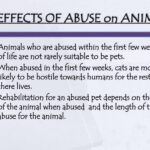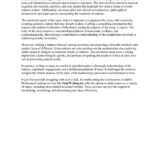Witnessing animal cruelty is perhaps one of the most distressing experiences one can encounter. The heart-wrenching scenes of neglect, abuse, and torment can leave a lasting impact. What would you do if you came upon an animal in distress? Would you know how to respond effectively, or would the uncertainty paralyze you? The unfortunate reality is that animal cruelty is prevalent in various forms across the United States, and understanding who to contact can empower any concerned citizen to take meaningful action.
Understanding the hierarchy of intervention is essential when it comes to addressing animal cruelty. The laws protecting animals vary significantly from state to state, making it imperative to familiarize oneself with local regulations. Knowledge and awareness are the first steps to mobilizing help for suffering animals. Here we explore the appropriate channels that should be pursued when witnessing animal cruelty.
First and foremost, local animal control agencies should be your primary contact when you witness an animal in distress. Animal control officers are trained to investigate reports of animal abuse or neglect. These professionals are equipped to address various situations ranging from malnourished pets to intentional acts of cruelty. Each municipality typically has an animal control division, which can be reached via a non-emergency phone number. Familiarizing yourself with this contact information beforehand can expedite your response during a crisis.
In cases where immediate danger is evident, calling 911 or your local emergency services is advisable. This step is crucial if an animal is being actively harmed, or if the predicament poses a threat to public safety. Police officers are increasingly trained to address animal cruelty cases and can provide firsthand protection to the distressed animal. When making this call, be prepared to provide clear and concise details about the situation: location, type of animal, and the nature of the abuse or neglect observed.
In addition to local authorities, numerous animal welfare organizations operate throughout the U.S. These non-profit entities are dedicated to rescuing abused animals and advocating against cruelty. Organizations such as the American Society for the Prevention of Cruelty to Animals (ASPCA) and humane societies across the nation have hotlines for reporting animal cruelty. If your state has a dedicated humane organization, contacting them can further ensure that the situation receives the necessary attention. Their trained staff may offer guidance on how to approach the issue, and some may even dispatch investigators to the scene.
Another important resource is the website of the Humane Society of the United States (HSUS), which provides an extensive guide on reporting animal cruelty. This organization offers valuable insight into recognizing signs of abuse and understanding one’s role in the reporting process. From providing contact information for local organizations to offering tips on identifying when a situation warrants immediate action, HSUS serves as a pillar of support for those unwilling to stand idly by in the face of cruelty.
On the ground level, gathering evidence can significantly bolster the case against the perpetrator. If it is safe to do so, take photographs or videos of the animal as well as any visible evidence of abuse, such as an inadequate living environment or injuries. Documentation serves as powerful ammunition when presenting your case to authorities. However, it is critical to prioritize safety for both the animal and yourself. In many instances, confrontation can exacerbate the situation or put you in harm’s way. Maintain a distance and avoid engaging with individuals who exhibit aggression towards animals.
We’ve often heard about the bystander effect—when individuals hesitate to act due to the presence of others. Conversely, witnessing cruelty demands that we break this cycle of indifference. Did you know that each year, millions of animals suffer due to inaction? It indeed poses a collective challenge to society: the duty to advocate for the voiceless. What can you do to be part of the solution? Consider engaging in community awareness initiatives, distributing informational materials on local reporting channels, or even organizing workshops on animal welfare. Your contribution can ignite a wave of awareness in your immediate circle.
Furthermore, nurturing relationships with local veterinarians and pet groomers can create a network for information sharing regarding suspected animal abuse. These professionals often encounter situations that raise red flags about an animal’s welfare. Creating a community that is educated and vigilant can collectively contribute to curbing animal cruelty.
Finally, remember that the responsibility does not lie solely upon the authorities. Advocacy starts with you. If you discover that local animal control seems ineffective or underfunded, consider reaching out to local government officials to voice your concerns. Create petitions, rally others, educate your community, and remain committed to the cause. Change requires sustained effort and engagement from concerned individuals.
In conclusion, knowing whom to contact when you witness animal cruelty empowers you to take a stand. Animal welfare is a collective responsibility, a challenge that must be met with resolve and commitment. Through awareness, documentation, and community engagement, together, we can advocate for the helpless and foster a world where compassion prevails over cruelty. Observe closely, act decisively, and lead with compassion—these are the foundations of responsible citizenship regarding animal welfare. When we witness cruelty, it is not enough to turn away. Instead, let us run towards the challenge, ready to make a difference—one call at a time.







